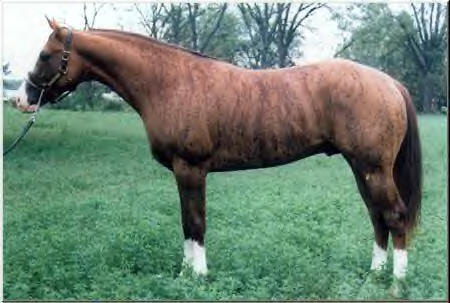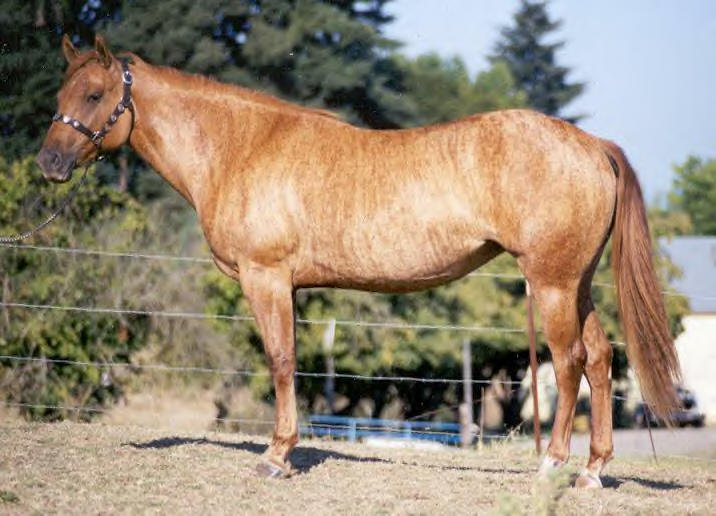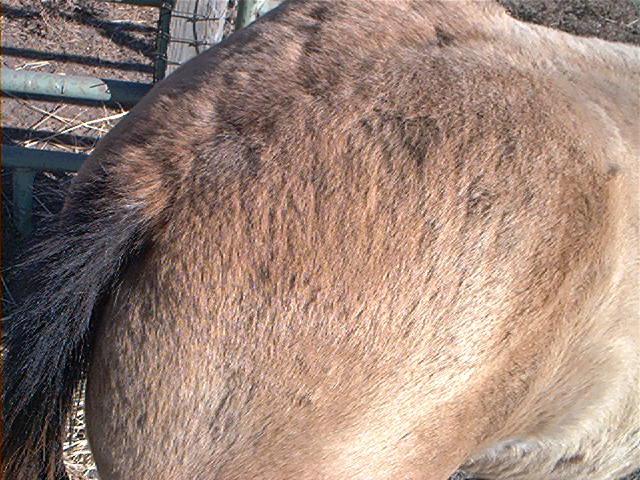
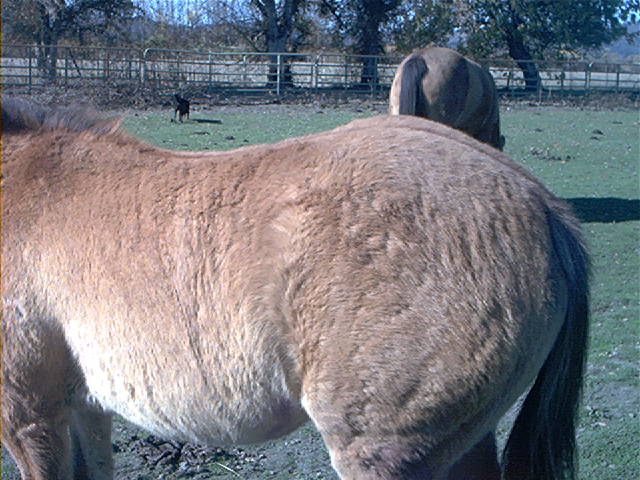
WE HAVE MOVED THIS SITE. PLEASE CLICK HERE TO VISIT OUR NEW SITE:
http://www.justabrindlehorse.com
BRINDLE HORSES
You know, back in 2001 or so my friend Barbara K. use to call me all the time and tell me to look at the horse she was looking at online. she would say, "I want this one, OH look at this one, I want that one". Then one day she called me and said "I found the horse that I want ! It's a brindle !. I told her there was no such thing ! She proved me wrong by sending me to Sharon Batteate's site. I was so interested in them, I had to learn about them. Here I am several years later and still trying to figure out the big mystery.
So, to you Barb ! THANKS !
Basically there is so little testing done on Brindle colored horses because there is not many of them out there to test on. It appears there is two ways in which a Brindle phenotype (outward appearance) can occur. In some horses, the pattern has been inheritable.
They have completed a few tests on Brindle colored horses with more striking pattern like the ones pictured below and what they found was that each horse had two genotypes which is extremely rare. It seems that the more striking pattern is the result of two embryos blending to form one individual.
There also seems to be another type of Brindle patterned horses and that is one that comes from the mare called "Star" . This pattern is not as "Striking" as the pic's below and it is harder to see from different angels and or lighting on some horses and others it's easier to see. This pattern has proven to be inheritable in Stars line, unlike the more striking pattern. Star has produced five foals to date, four of which carry her seasonal pattern. This indicates there may be a gene involved, which is inherited dominantly, since approximately 90% of her foals have inherited the pattern from her.
Many people confuse the
Brindle pattern with Dun Factor markings (stripe down the back, barring on the
legs, and occasional regular-spaced striping down the ribs or even heavy shading
coming down from their dorsal stripe). At one time, it was
thought Brindle was a just a variation of Dun Factor. Indeed, there have been
many examples of horses that were probably carrying both Dun Factor and Brindle.
However, many do not have any Dun Factor markings whatsoever, indicating the two
patterns are distinct genetically.
Brindle horses also have texturing in their coat, similar to that seen in some
Appaloosa horses and Paint horses. The pattern seems to be inheritable, especially in terms of
coat texturing, but the expression of the darker or more intense pigment to make
the pattern visible is highly variable, and even varies with individual horses
seasonally / yearly. Sometimes the pattern seems to be composed of dark hair
(black or brown), sometimes of white hair (roan or gray).
Below are two DIFFERENT fillies born in 2005. Both fillies have pretty much the same "Brindle Characteristics" They have raised hair that is darker then the other hair. Sharon Batteate that has done over 16 years of discovery on Brindles that has the Brindle Horse Site had told me about how many Brindles show what she calls "moth eaten" and until these two fillies of mine started to get their winter coat (pictured here) I didn't know what she really meant until they started to display it.
As you can see here on the close up filly on the top picture is getting her winter coat and it almost appears that someone took scissors to them or another horse was biting at them to make these marks but it's actually the difference in how the hair grows with the brindle hairs. All of the faint lines you see on their body are the streaks of Brindle.
Another thing that Sharon has noted is some Brindles display thinning hair on the top of the tail, forelock, and mane both of these fillies show all of those signs but the Buckskin filly on the left shows it more then the Dun filly on the right. As you can see the top of her tail on the left picture it almost looks like she had started rubbing it.


Below is a Picture of the above Dun fillies full sister which is also a seasonal Brindle.
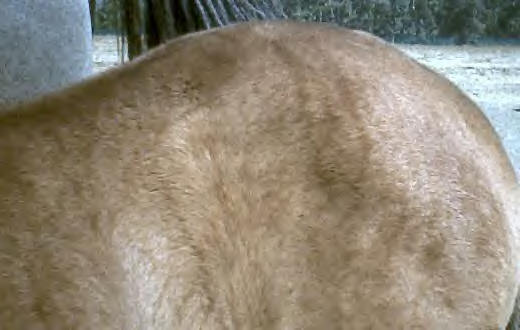
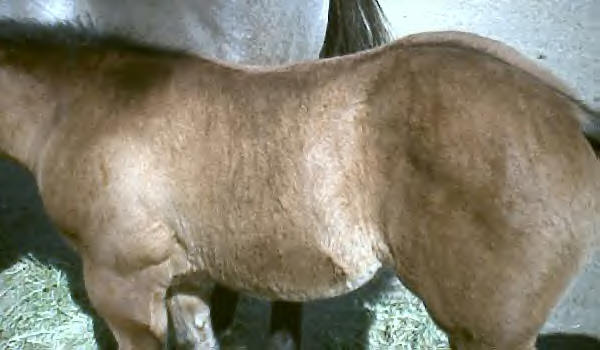
This picture below is of the mare Ima Star Moon Bar which is the mother to "Ima Star Brindle Bar"
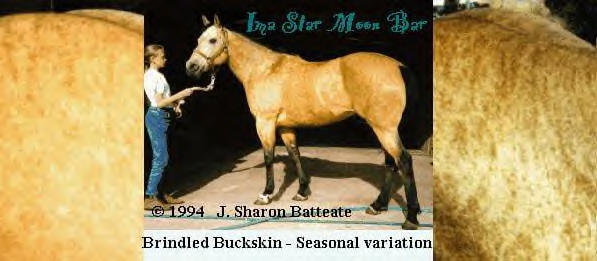
FRS RECKLESS DAN
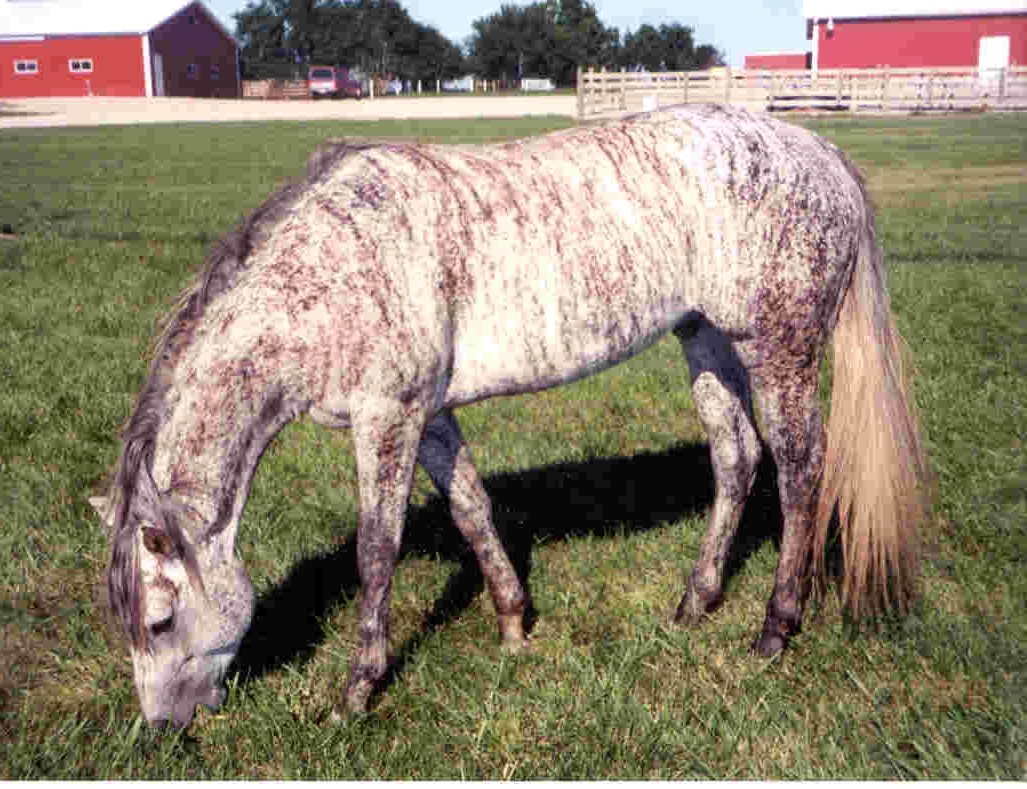
These are two horses below that display the brindle pattern but have been DNA tested to be Chimeric
Laminate Terms of Chimerism (chimeric) is basically chimera in animal that has two or more different populations of genetically distinct cells that originated in different zygotes meaning basically 2 embryos fuse into one. It's said to be a "FLUKE" very, very rare. As trying so hard to reproduce the coloring "us brindle people" think it's best to keep trying with brindle colored horses and there is obviously a "gene" there so lets work with what we have, so we march on "Fluke" or Not, we shall keep trying.
Stallion on Left is Dunbars Gold, owned by Carole Dunbar mare on right is "Sharp One" owned by Denise Charpilloz
